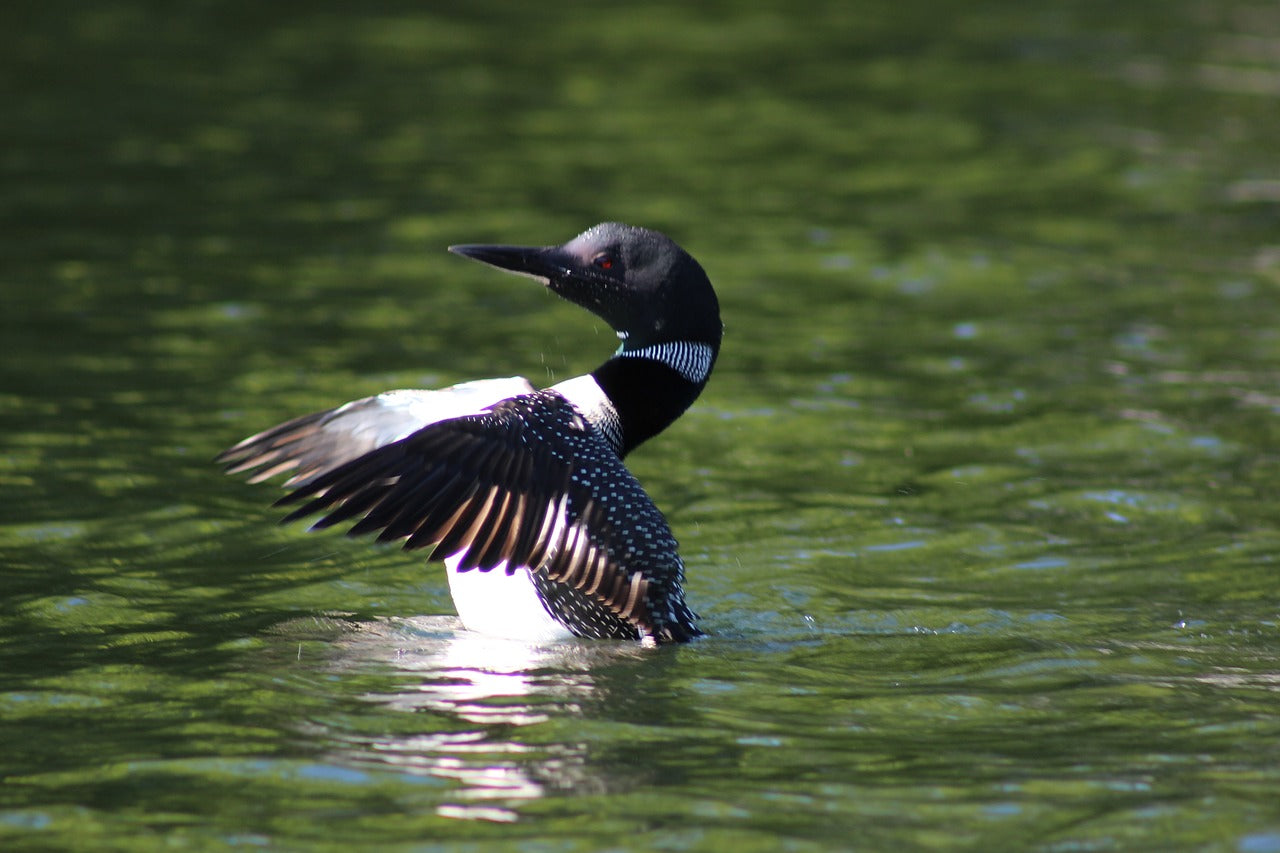At Rocky Mountain Flannel, we’re fortunate to meet so many people from around the world. Banff is often sought after, nestled right in the vast Canadian Wilderness. The beautiful mountains surround us and bring a sense of awe to those who experience the rocky captivity.
It’s no secret that the Canadian wilderness is breathtaking. Wander through our parks and you’re overwhelmed with a sense of tranquility. Visit some of our serene lakes and, if you listen closely, you can hear the beautiful call of one of Canada’s most iconic birds - the Common Loon.
So long as you’re in Canada, you won’t have to go very far to find the Loon. Every province and territory in the country is home to the species. The common Loon is a migratory bird, finding open bodies of water all over Canada in spring and summer months to nest.
Canada’s widely used $1 coin, the "loonie" features an image of our iconic bird. The 1991 series of the $20 bill also features the Common Loon. While not officially Canada's bird, it is definitely thought of by many to be just that.
We're proud to stand behind this iconic bird. So much so, that we feature it on our shelves. Check out our Love of the Loon Collection to see beautiful products featuring the Common Loon!
Want to know more about the beautiful bird? Here are 12 fascinating facts about the common loon:
#1 The Common Loon Is NOT A Duck
Contrary to what many think, the Loon is NOT a duck. You'll often hear many make this misconception. While a bird of the water, the Loon is classified separately by scientists. In fact, there are five loon species that make up the Gavia Genus.
#2 The Common Loon Is A Seasonally Monogamous Breeder
Loons begin breeding at 2 years in age. The species is a monogamous breeder; they will pair up for a season and stay together until migration. Courtship can be witnessed as bill-dipping and dives. Once a pair bonds, the male and female will build a nest together. This typically occurs in early May.
#3 The Common Loon Prefers Particular Breeding Locations
Not only are loons monogamous with partners, but loyal to breeding site as well. Loons will often reuse nest sites, and studies show an increased success rate with these "recycled" nests than the initial attempt.
These nests are situated very close to water, and preference has been noted to be on island locations away from potential predators.
Loons are also very territorial, claiming an area from 59 to 200 acres!
#4 The Common Loon Is An Amazing Diver
Sometimes referred to as the "Northern Diver", the Common Loon has been recorded to have dived up to a staggering 70m!
The waterfowl can also stay under the surface for quite some time - sometimes for longer than one minute. The average dive time is said to be about 42 seconds.
Check out this video of a Loon swimming with some scuba divers:
#5 The Common Loon Is An Excellent Fisher
One perk of being such a great diver is the bird's ability to catch prey. It is said that 80% of the Common Loon's diet is fish. With its webbed feet, the "Northern Diver" effortlessly maneuvers underwater to hunt for its main food source.
#6 The Common Loon Eats A LOT
With its excellent fishing abilities, the Common Loon has the ability to take in a lot of its main food source. It has been estimated that a pair of Loons will eat 425kg of fish during the time they spend in their breeding territory!
#7 The Common Loon Can Fly Fast
It's not the most efficient bird when it comes to taking off, needing a long runway to catch flight; however, once it gets going the Loon can fly fast. The bird will fly upwards of hundreds of kilometres during migration with a reported speed of 120 km/h!
#8 The Common Loon's Eyes Change With The Season
It's well-known that Loons have beautiful, crimson red eyes. What some might not know is that this is only during mating season - thought to be for attraction towards the opposite sex, as well as defending territory.
Not only do the eyes change to a grey outside of mating season, but the plumage will also change, where the Loon will lose its spottedness and turn to a dark-brownish colour.
(photo credit: John Picken)
(photo credit: Dick Daniels)
#9 The Oldest Common Loon Recorded Was Almost 30 Years Old
The Loon has quite the lifespan, sometimes living more than 20 years in age. The longest living Loon recorded has been thought to be around 29 years and 10 months old.
#10 The Common Loon Has A Variety Of Vocalizations
Loons are well known for their ambient wail. This call is often compared to that of a wolf's howl.
They also display a variety of other vocalizations, including a tremolo, yodel, and hoot.
The Tremelo is a short, wavering sound that is characterized as a "laughing" call. It is used to signal distress or territorial threats.
The Yodel is only used by the male as a territorial call and to establish dominance. The length of the call signifies the level of aggression in the bird.
The hoot is used amongst a family of loons to signal location, and to summon chicks for feeding time.
#11 The Common Loon is Very Clumsy
The way the Loon's legs are set (far back on the body), they are not good at walking. The common loon will push itself along on its belly.
Loons got their name due to clumsiness. Loon is adapted from the word loom, which comes from the Icelandic word lomr and the Swedish word lom (both referring to one who is lame or clumsy).






Leave a comment